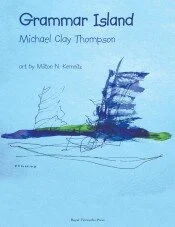On this page: Curricula | General Resources | Picture Books
curricula
📚 Analytical Grammar. This curriculum is the solution for those who are frustrated with grammar programs that cover the same material year after year. Analytical Grammar ditches the repetition and busy-work in favor of a rigorous, analytical approach that starts later (Grade 6) and has students achieving mastery within a relatively short time-frame. Watch the introductory video on the homepage to learn more about the AG philosophy. Parents who want to start younger should see Analytical Grammar Jr. – Middle • High
📚 Winston Grammar. This program offers a fresh way to learn grammar, eliminating traditional textbooks and replacing them with a multi-sensory approach. Instead of diagramming or underlining words on a page, students work with color-coded cards to analyze sentences and determine each word’s job within the sentence. The program has two levels—Basic and Advanced. The manufacturer recommends waiting until about fourth grade to start the Basic level, and suggests all students start with Basic, regardless of age. The Basic level covers parts of speech, noun functions, prepositional phrases, and modifiers. The Advanced level can be taught starting around Grade 7. It covers more complex noun functions, reflexive pronouns, possessives, gerunds, infinitives, participles, and various kinds of clauses. – All
📚 MCT Language Arts by Michael Clay Thompson. If you're looking for a work-intensive, all-in-one Language Arts curriculum, then this program may be for you: "These exciting and demanding books are phenomenally successful both as stand-alones and as part of a longer term, progressive English Language Arts curriculum." At the core of the program is the grammar series, but the full curriculum interweaves vocabulary, poetics, writing, and literature. Levels 1-7 cover Elementary and Middle School Language Arts. – Elementary • Middle
📚 Brave Writer. Want to do away with the grammar curriculum altogether? One option is to use Brave Writer’s literature-based unit studies to study grammar and punctuation in the context of rich literature (see Literature). Here’s how it works: Choose a book that sparks interest and download the Arrow (Grades 3–6) or Boomerang (Grades 7–10) unit study packet from the Brave Writer website. Read the book together over the course of 4 weeks. Each week, the Arrow or Boomerang highlights a key passage from the book for close study. Together with your child, analyze the passage with a focus on the pertinent grammatical rules. For example, if the passage contains a list separated by commas, you will discuss how commas are general used to separate items in a series. The use of a reference book (such as Nitty-Gritty Grammar) is suggested, so that you and your child can study grammar rules as they arise. – All
📚 Evan-Moor Grammar & Punctuation. This isn't a full curriculum but a series of books that efficiently teach the rules of grammar and punctuation. A good choice for those who prefer not to spend too much time on formal grammar instruction - the list of simple rules and clean format make this series a nice resource for students to refer back to as they edit their own writing. The Evan-Moor books can be useful in preparing for standardized testing and may be ordered as print copies or downloaded as PDFs. – Elementary • Middle
general resources
📖 Nitty-Gritty Grammar: A Not-So-Serious Guide to Clear Communication by Edith Fine and Judith Josephson. This entertaining grammar reference guide teaches the parts of speech and the rules of punctuation, capitalization, and spelling. Recommended for the casual tone, the clear and humorous examples, and the many cartoons interspersed throughout. Also see More Nitty-Gritty Grammar by the same authors. – All
📖 Woe is I Jr.: The Young Grammarphobe's Guide to Better English by Patricia T. O'Conner. This adaptation of the adult bestseller, Woe Is I, is a great resource for middle and high school students. Writing in a conversational tone, O'Conner clearly and succinctly demystifies some tricky grammatical concepts. Topics include pronouns, possessives, punctuation, parts of speech, and commonly confused words. – Middle • High
📖 The Blue Book of Grammar and Punctuation: An Easy-to-Use Guide with Clear Rules, Real-World Examples, and Reproducible Quizzes by Jane Straus. "The Blue Book of Grammar and Punctuation is a concise, entertaining workbook and guide to English grammar, punctuation, and usage. This user-friendly resource includes simple explanations of grammar, punctuation, and usage; scores of helpful examples; dozens of reproducible worksheets; and pre- and post-tests to help teach grammar to students of all ages." Best for older students; find lessons and more quizzes on the book's website. – Middle • High
📖 The Only Grammar Book You'll Ever Need by Susan Thurman. This "One-Stop Source for Every Writing Assignment" is a good reference guide to keep on hand for older students (and adults) who already have familiarity with the basic rules of grammar and punctuation. – Middle • High
▶️ English Grammar Basics from Socratica. This series of short, clearly presented video lessons covers the basics of grammar, including parts of speech, commonly confused words (who vs. whom), and some punctuation. To browse and watch, click on the three horizontal bars in the top right corner of the video below. – All
▶️ Comma Queen videos. The New Yorker’s copy editor Mary Norris, aka the Comma Queen, explores “language in all its facets” in this series of short videos. Have fun learning about punctuation, parts of speech, commonly misused words, and more. Norris uses passages from The New Yorker articles to illustrate her lessons. To see the full playlist, click on the three horizontal bars in the top right corner of the video below. – Middle • High
▶️ Does grammar matter? from TED-Ed. “It can be hard sometimes, when speaking, to remember all of the grammatical rules that guide us when we’re writing. When is it right to say “the dog and me” and when should it be “the dog and I”? Does it even matter? Andreea S. Calude dives into the age-old argument between linguistic prescriptivists and descriptivists, who have two very different opinions on the matter.” – All
▶️ How many verb tenses does English have? from TED-Ed. “How many different verb tenses are there in a language like English? At first, the answer seems obvious: there’s past, present, and future. But it isn't quite that simple. Anna Ananichuk explains how thanks to something called grammatical aspect, each of those time periods actually divides further.” – Middle • High
▶️ When to use “me”, “myself” and “I” from TED-Ed. “Me, myself, and I. You may be tempted to use these words interchangeably, because they all refer to the same thing. But in fact, each one has a specific role in a sentence: ‘I’ is a subject pronoun, ‘me’ is an object pronoun, and ‘myself’ is a reflexive or intensive pronoun. Emma Bryce explains what each role reveals about where each word belongs.” – All
▶️ How misused modifiers can hurt your writing from TED-Ed. “Modifiers are words, phrases, and clauses that add information about other parts of a sentence, which is usually helpful. But when modifiers aren’t linked clearly enough to the words they’re actually referring to, they can create unintentional ambiguity. Emma Bryce navigates the sticky world of misplaced, dangling and squinting modifiers.” – All
▶️ When to use apostrophes from TED-Ed. “It’s possessive. It’s often followed by S’s. And it’s sometimes tricky when it comes to its usage. It’s the apostrophe. Laura McClure gives a refresher on when to use apostrophes in writing.” – All
▶️ How to use a semicolon from TED-Ed. “It may seem like the semicolon is struggling with an identity crisis. It looks like a comma crossed with a period. Maybe that’s why we toss these punctuation marks around like grammatical confetti; we’re confused about how to use them properly. Emma Bryce clarifies best practices for the semi-confusing semicolon.” – All
▶️ Grammar’s great divide: The Oxford comma from TED-Ed. “If you read "Bob, a DJ and a clown" on a guest list, are three people coming to the party, or only one? That depends on whether you're for or against the Oxford comma–perhaps the most hotly contested punctuation mark of all time. When do we use one? Can it really be optional, or is there a universal rule? TED-Ed explores both sides of this comma conundrum.” – All
▶️ Comma story from TED-Ed. It isn't easy holding complex sentences together (just ask a conjunction or a subordinate), but the clever little comma can help lighten the load. But how to tell when help is really needed? Terisa Folaron offers some tricks of the comma trade. – All
picture books
📖 Just Me and 6,000 Rats: A Tale of Conjunctions by Rick Walton. Turn to this very funny picture book for a memorable introduction to conjunctions. – Elementary
📖 Things That Are Most in the World by Judi Barrett. "The silliest thing in the world is a chicken in a frog costume." This funny, imaginative, and wonderfully illustrated book is a great supplement for a study of superlative adjectives. – Elementary
📖 An Ambush of Tigers: A Wild Gathering of Collective Nouns by Betsy Rosenthal. This humorous rhyming picture book introduces young readers to some of the very interesting collective nouns that are used to describe groups of animals. Meet a prickle of porcupines, a tower of giraffes, a parcel of penguins, a business of flies, and many more. – Elementary
📖 Eats, Shoots & Leaves: Why, Commas Really Do Make a Difference! and other books by Lynne Truss. From the author of the adult bestseller, Eats, Shoots & Leaves, this short book nicely illustrates how commas can affect the meaning of a sentence. Each two-page spread features a single sentence punctuated in two different ways, alongside (very funny) illustrations that show the meaning of each sentence. End material explains the grammar rules applied on each page. See The Girl's Like Spaghetti and Twenty-Odd Ducks for similar treatment of apostrophes and other punctuation marks, respectively. – Elementary • Middle
📖 Punctuation Takes a Vacation by Robin Pulver. The students in Mr. Wright's class are always forgetting to use their commas, periods, and quotation marks, so the teacher decides to give punctuation a vacation. It's only then that the kids begin to appreciate the importance of punctuation. Use this funny little story to help explain why we punctuate. – Elementary
📖 Punctuation Celebration by Elsa Knight Bruno. Each punctuation mark is introduced with a two-page spread and a poem in this picture book. A fine supplemental resource to have on hand as you're exploring punctuation. – Elementary
📖 Alfie the Apostrophe by Moira Donohue. "Alfie the Apostrophe is nervous. Can he make it into the punctuation-mark talent show? There's plenty of competition. Question marks tell riddles; exclamation points do cheerleading routines. And it looks as if the director, Bud Asterisk, has mistaken Alfie for a comma! Will all of Alfie's practice pay off?" Indeed, Alfie is able to perform the impressive feats of contraction and possession and is the star of the show. – Elementary
📖 Exclamation Mark by Amy Krouse Rosenthal. Though not the most instructive grammar book you will read, Exclamation Mark is sweet, exuberant, and worth including in your early elementary study of punctuation. Just borrow it from the library. – Elementary


















